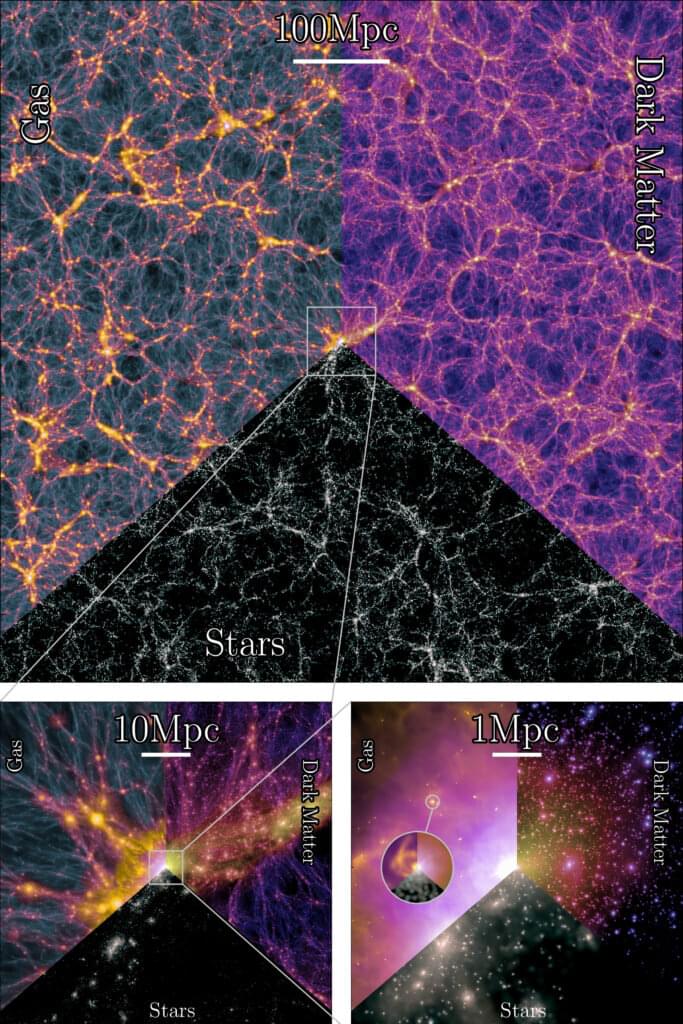York University and an international team of astrophysicists have made an ambitious attempt to simulate the formation of galaxies and cosmic large-scale structure throughout staggeringly large swaths of space.
First results of their MillenniumTNG project are published in a series of 10 articles in the journal Monthly Notices of the Royal Astronomical Society. The new calculations help to subject the standard cosmological model to precision tests and to unravel the full power of upcoming new cosmological observations, say the researchers including York Assistant Professor Rahul Kannan.
In recent decades, cosmologists have gotten used to the perplexing conjecture that the universe’s matter content is dominated by enigmatic dark matter and that an even stranger dark energy field that acts as some kind of anti-gravity to accelerate the expansion of today’s cosmos. Ordinary baryonic matter makes up less than five percent of the cosmic mix, but this source material forms the basis for the stars and planets of galaxies like our own Milky Way.
